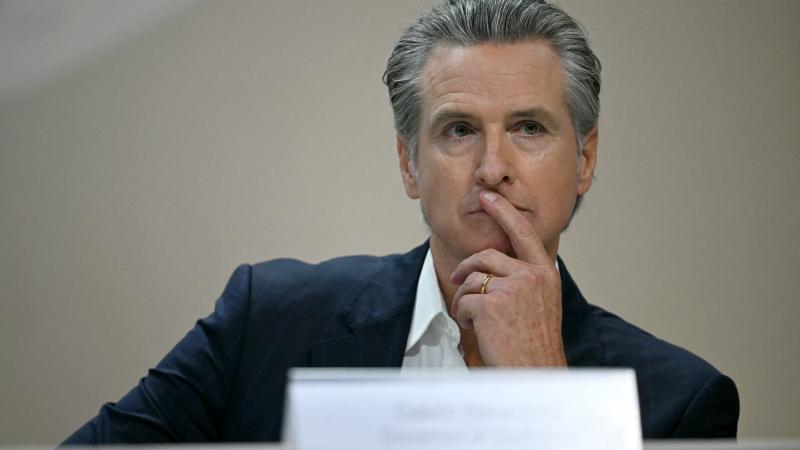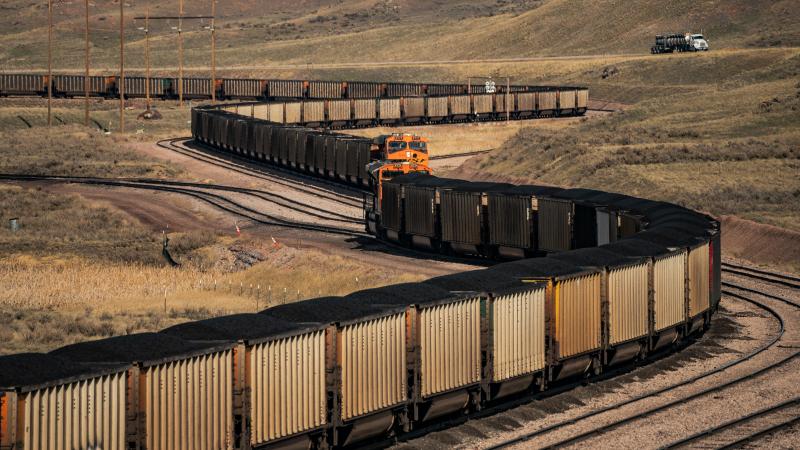Dam removal in CA to save salmon causes mass fish die-off as eco-activists pursue similar projects
“In my opinion, any salmon we’re producing this year are likely dead, and if they get to the main stem, they won’t be able to migrate out. I’m more concerned at this point with how do we rebuild the populations in those rivers,” Siskiyou County Supervisor Ray Haupt said.
Environmental groups are celebrating extensive efforts to remove dams across the United States, some of which produce carbon-free electricity. According to American Rivers, an anti-dam advocacy group, 65 dams were removed in 2022, and another 80 were removed in 2023.
Groups like American Rivers argue the dams are killing salmon and steelhead trout populations, encroaching on indigenous cultures, and harming water quality for people and wildlife.
Eyes wide open
The largest dam removal project in the history of the U.S. began on Northern California’s Klamath River last summer, with the removal of Copco No. 2, the first of four hydroelectric dams to be removed, also called "breaching" or "drawdowns."
In January, the state began draining reservoirs behind the three remaining dams. The draining is not going well, especially for the fish the projects are supposed to be protecting.
Large amounts of salmon have been stranded on mud that is also trapping deer, Oregon Public Broadcasting reports. Officials are warning people not to try to walk through it, as it can be very dangerous. According to California Globe, a two mile sediment plume extends into the Pacific Ocean.
“We’ve been told we’re the experiment,” Siskiyou County Supervisor Ray Haupt told Just The News. “Eyes wide open. It’s coming to a neighborhood near you.”
Another major dam-removal effort on the Snake River in Idaho took a major step forward recently with the signing of an agreement between the four Columbia River Basin tribes, the governors of Oregon and Washington, and the Biden administration.
While Congress would have to authorize the dams’ removal, Biden administration officials say that removing the dams would help boost “clean energy” and restore wild salmon populations, and the energy produced by those dams will be made up by "the build-out of at least one to three gigawatts of Tribally-sponsored renewable energy production."
“Today, the Biden-Harris Administration and state and Tribal governments are agreeing to work together to protect salmon and other native fish, honor our obligations to Tribal nations, and recognize the important services the Columbia River System provides to the economy of the Pacific Northwest,” John Podesta, senior clean-energy advisor to the president and future special envoy on climate, said in a statement.
Regional impacts
Haupt retired after 33 years as a district ranger on the Klamath National Forest. He has a bachelor of science degree in natural resources management and forestry, and he’s remained active advising and teaching on forestry matters since retiring. He said he saw natural disasters during his career, but the impacts of breaching the Klamath River dams are some of the worst impacts he’s ever seen.
Haupt explained that an Environmental Impact Statement (EIS) on the Klamath River dam removal project was done in 2012, which determined that the effort would require about $250 million in restoration work to bring salmon populations back after the losses stemming from the dams’ removal. Congress, he said, wouldn’t appropriate the money for the removal and mitigation. Oregon and California then took up the effort with their own funding mechanisms, and they conducted another EIS. Those states’ plan, Haupt said, didn’t include the $250 million for mitigation.
“You can kind of draw your own conclusion there,” Haupt said. Haupt said the loss of deer is pretty small, and while dying deer cause a “normal human emotional response,” deer populations will bounce back fairly easily.
He said the most concerning problems from the Klamath removal project are the unintended consequences to the watersheds that flow into the Klamath.
“In my opinion, any salmon we’re producing this year are likely dead, and if they get to the main stem, they won’t be able to migrate out. I’m more concerned at this point with how do we rebuild the populations in those rivers,” Haupt said.
He said there will also be impacts to water curtailments for the agriculture industry in the area, which is a primary driver of the local economy. It’s also impacting the outdoor recreation industry. Besides sport fishing, the area was a popular destination for whitewater rafting in the summer.
“I can tell you [outfitters] are not real happy. As long as the water looks like chocolate soup, I doubt there’s going to be much of that,” Haupt said.
Haupt said he’s worked with elected officials on the plans for the Snake River breachings, including interactions with Rep. Cathay Rodgers, R-Wa., and Sen. John Barrasso, R-Wyo. He said in the planning of these projects, there is too much focus on the impacts to the main stem of the river.
“But the regional effects are probably much greater. And quite frankly, they were not even looked at in either one of the EISs that were done for the Klamath,” Haupt said.
Temporary impacts
The Klamath River Renewal Corporation (KRRC), which is tasked with removing the dams and the restoration work that follows, confirms that the removal project is killing fish, but the nonprofit said the impacts are temporary.
Ren Brownell, public information officer for KRRC, told Just The News that the drawdown period will continue through the spring. During that time, up to 7 million cubic yards of sediment — an amount 4 miles long and four miles high — will flow downstream.
Brownell said the majority of that sediment was sent downstream during the initial phase, which has already concluded. She said there will be “small pulses of sediment” when higher flows come down the river during the spring runoff, and also during further removal work toward the end of the process.
“Agencies did expect the impacts we are seeing, which is why we are performing the drawdown period now. This is when state, federal agencies and tribes determined there would be the least amount of impact on downstream species, particularly for the species we are working to recover,” Brownell said.
She said they also expected a large die-off of non-native fish — perch bass and catfish — that lived in the reservoirs.
“The short-term negative impacts created by drawdown were expected and will be offset by the long-term benefits to salmon runs that support culture and commerce along the river,” Brownell said.
Like pudding
The concerns that Haupt and others have about the impacts of the Klamath project are also seen in another drawdown project in Oregon. The Capital Press reports that court-ordered drawdowns of two reservoirs in central Oregon are causing mass fish die-offs and water quality issues.
“It was like pudding, it was so thick. There was so much mud,” one resident told the Capital Press.
The fish deaths, the Oregon newspaper reported, are a result of “barotrauma,” which is an extreme change in pressure as the reservoir drops. It’s similar to a condition scuba divers experience called the “bends.”
The potential impacts of the removal of the dams on the Snake River were discussed in a House Subcommittee on Energy, Climate and Grid Security in January. Republicans on the committee say the agreement signed in February was developed behind closed doors in consultation with radical environmental groups with no input from actual electricity providers, who are concerned about power reliability should the hydroelectric power be removed from the grid.
Democrats on the committee insisted that there is no plan to remove the dams contained in the agreement. Rep. Diana DeGrett, D-Colo., accused Republicans of spreading “misinformation and fear mongering” by raising the fact that such a plan exists.
The Idaho Capital Sun reported that the Idaho legislature recently discussed lawmakers’ concerns about the impacts of the Snake River dam removal project. Nearly 10% of U.S. wheat exports are shipped via barge through the four dams on the Snake River. About 50% of the wheat grown in Idaho is shipped via barge from Lewiston to Portland, where it’s then exported to international markets, according to the news outlet. Breaching the dams will make the river unnavigable for these farm operations.
No appeal
Haupt said the energy regulatory rules allowed the Federal Energy Regulatory Commission (FERC) to make a decision on the Klamath dam removal based on an EIS that has no appeal process, which is allowed in other processes. This prevented Haupt and others from raising their concerns about the regional impacts they say they’re now seeing.
Siskiyou County, Haupt said, had spent $1.2 million hiring environmental scientists and law firms to put relevant impacts and information in front of the FERC decision-making process. If their concerns were not addressed, they expected to initiate an appeal.
“We were informed the only avenue we had was to go directly to litigation, which was not financially viable for us,” Haupt said.
Many of the dozens of dams that environmental groups are looking to remove are being guided by the same process, and it may be years before all the impacts of the projects are fully realized.
The Facts Inside Our Reporter's Notebook
Links
- 65 dams were removed in 2022
- 80 were removed in 2023
- American Rivers argue the dams are killing salmon
- Copco No. 2
- OPB reports
- According to California Globe
- Biden administration officials say
- said in a statement
- Klamath River Renewal Corporation
- and others
- Capital Press reports
- bends
- potential impacts
- Idaho Capital Sun reported
















